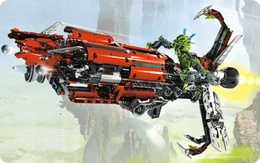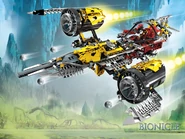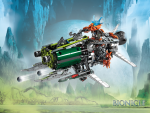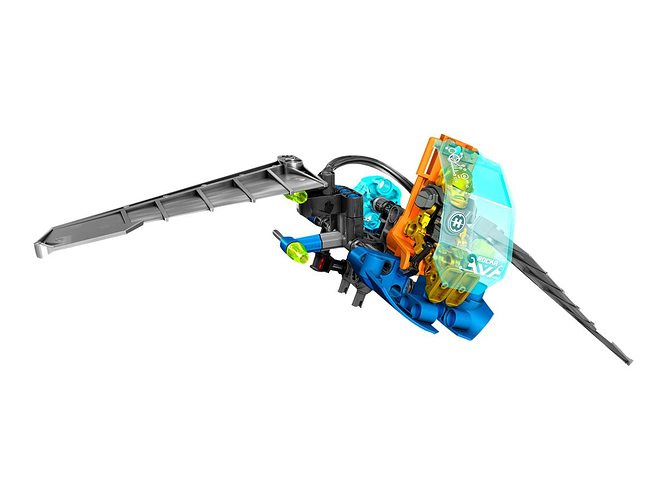The second half of the 2008 storyline featured three big flying vehicles-the Rockoh T3, the Jetrax T6, and the Axalara T9. Well, I’m not sure if they were really that “big.” Going by the scale of the sets and the comics, they’re probably comparable to Star Wars speeder bikes in terms of size. Their designs are nothing short of awesome. But recently, I started wondering…could vehicles like those REALLY fly?
I’m sure you all know how man-made aircraft work: the engines propel the aircraft forward, and the air passing over and under the wings give it lift. The wings, tailfins, and rudders are what allow the plane to rise, fall, or turn in the air. But if the plane’s engines were to stop running, then the plane would fall from the sky.
With that in mind, let’s take a look at each vehicle.

The Axalara T9 might be the most streamlined of all of these vehicles, making for a sufficiently aerodynamic form. According to BioSector01, its rear engine provides seven millions pounds of thrust, or 31 million Newtons. That gives it plenty of propulsion for flying through the air. I’m not sure if that round gizmo under the nose is an engine turbine of any kind, but if it is, then it’ll help, too.
But the problem here is, how does it generate lift? The three blade extensions at the back definitely don’t count as wings-in fact, they probably end up creating extra drag! And, obviously, there are no wings on the sides of the Axalara, and no helicopter blades, either. Maybe this problem is dealt with by having some kind of technology that creates an air cushion, similar to a hovercraft. But given how powerful the engine’s thrust is, that air cushion had better be a strong one.
Now for the Jetrax T6.

Of all three of the vehicles, this one might bear the most resemblance to the aircraft we have in our world. We’ve got a central fuselage, two wing-like extensions with large engines, and a sleek shape. Although, most modern aircraft would have the cockpit at the front, as opposed to the back.
That said, could the Jetrax T6 fly while adhering to the laws of physics? Well…I think it could, actually. BioSector01 doesn’t say how much thrust the engines can provide, but given their size, I’d imagine it’s a good amount. And the fact that they’re placed on either side of the fuselage’s center helps. They can provide thrust to propel the vehicle forward, and assuming that the extensions with the engines have some kind of elevators, they could allow the Jetrax T6 to ascend or descend, too. And it does have extra tailfins at the base of its rear cockpit, so…
There is an issue, however. BioSector 01 says that its engines provide extra power, but can be shed to give extra speed. Um, what? As far as I can see, those engines are the only things giving thrust to the Jetrax T6. How can it possibly fly if not for those engines?
Lastly, the Rockoh T3.

This is easily the least aerodynamic of the three vehicles. Of course, this might be due to its supposed purpose of being a flying battering ram. As for the rest…well, the engine exerts two and a half million pounds of thrust. That’s pretty strong. And, whereas the Axalara T9’s lack of wings present a problem, the Rockoh T3 has two sets of wings-one at the rear, and one in the middle. It seems reasonable to assume that the rear wings are for steering, and the ones in the middle help provide lift. Only…those wings don’t seem big enough for a vehicle of this size. Again, it might have to resort to a REALLY strong repulsorlift technology.
One point of note is that one of the sets’ functions is that you can fold in the central wings for a “power dive.” This is actually 100% true to the laws of physics. If a fixed-wing aircraft was going really fast through the air, and it folded its wings backward, it would indeed take a nosedive.
Of course, this IS set in a science-fiction universe. Given that the Great Beings were able to create a 40 million-foot-tall robot that somehow doesn’t collapse the moment it sets foot on Aqua Magna, it’s not such a stretch to think that the MU inhabitants could work around the laws of physics to allow for the vehicles we saw to exist. But, even with all that said, these vehicles are still much more realistic than this:

